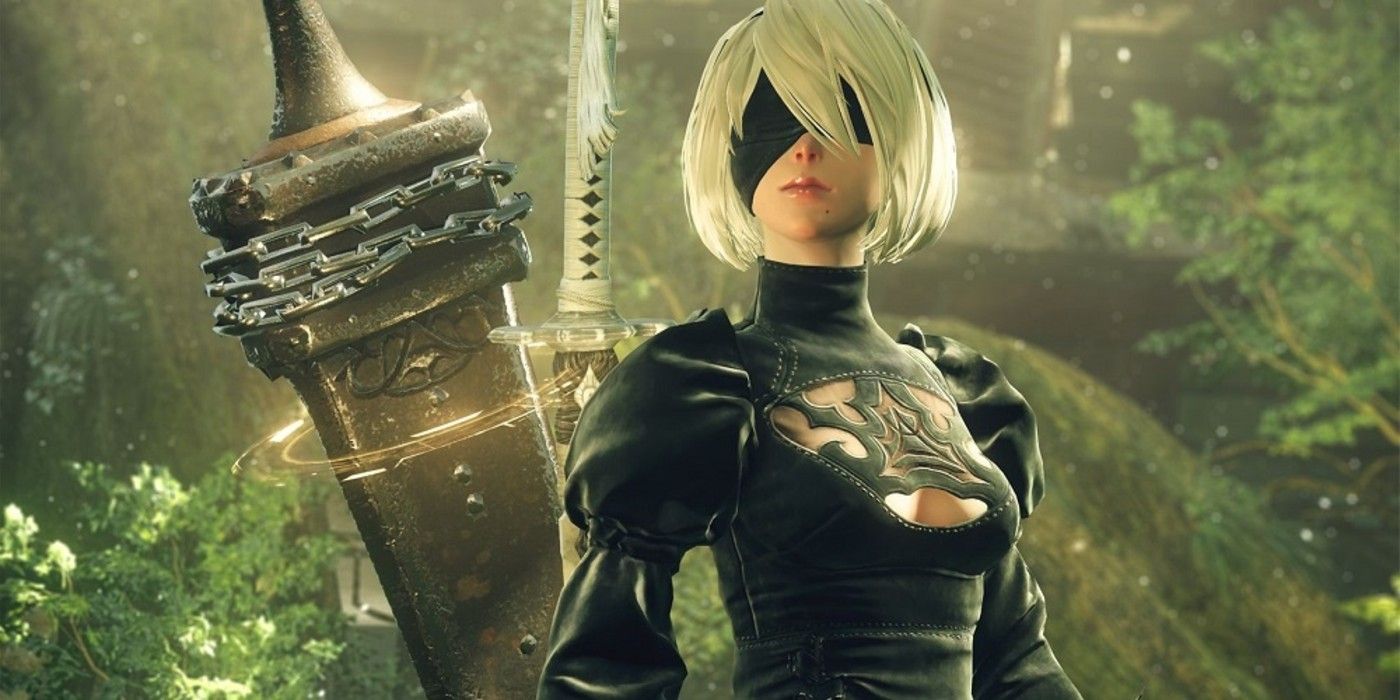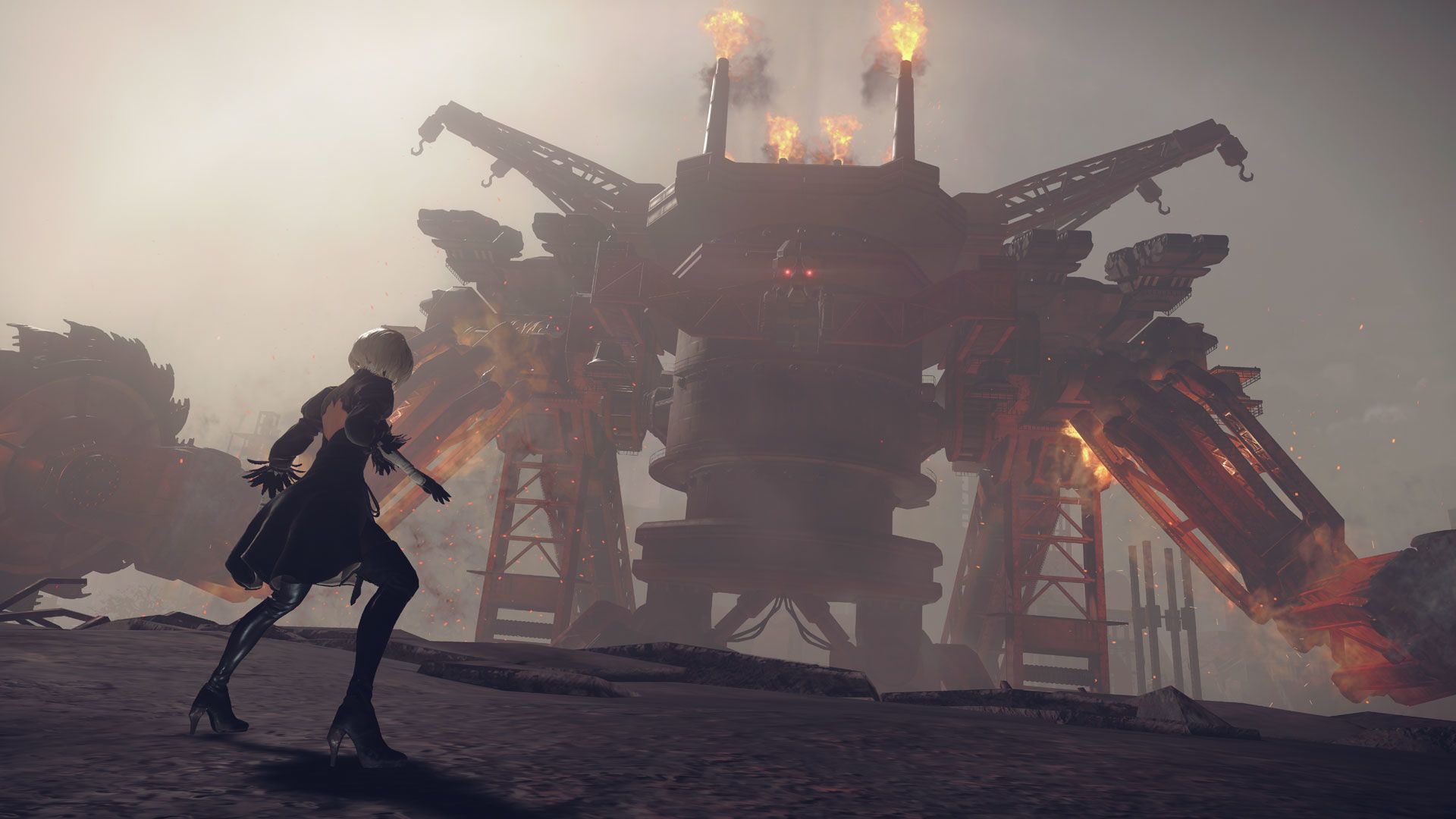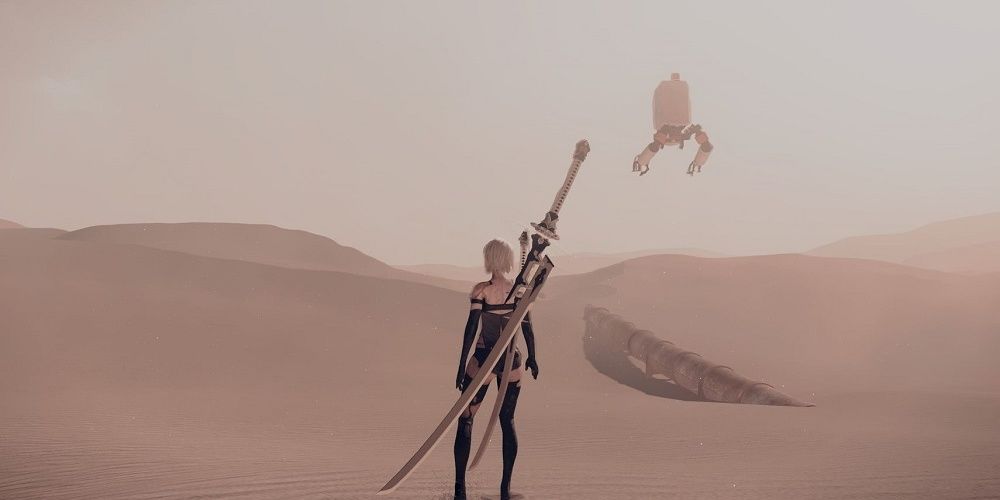[Warning: Spoilers for NieR Automata below]
Platinum Games are infamous for creating some of the best action experiences in all of gaming. They've seen much critical success with the beloved Bayonetta series and the atmospheric and aesthetically pleasing Astral Chain. However, one of their games stands out as not only an outstanding achievement in gameplay but also in the narrative. Nier Automata was released in 2017. Along with the expected gameplay polish that comes with a Platinum project comes a story (written by Yoko Taro) that redefines what video game stories can be in the modern era.
NieR Automata's opening begins with a powerful statement. The tone of the game is set as 2B informs the player, "Everything that lives is designed to end. We are perpetually trapped in a never-ending spiral of life and death. I often think about the god who blessed us with this cryptic puzzle, and wonder if we'll ever get the chance to kill him." Upon reflection, this quote refers to many of the questions that are posed within the narrative. NieR Automata's main cast are three androids, two of which serve an organization called YoRHa. YoRHa's main goal is to restore glory to mankind after the downfall of the human race on earth.
Within the opening hours of Automata, the player's expectations and view of the world should already be largely subverted. There is a clear disconnect between 2B's initial ideology and her position in life. Her purpose is to serve YoRHa's commands. Regardless of this, she largely knows very little about the organization. On her journey with a scanner model named 9S, she learns that robots have become sentient and denies their emotional validity simply due to YoRHa's command.
Symbolism and Perspective in NieR Automata
2B's "blindness" to the truth is also expertly demonstrated in her character design. 2B and 9S both wear black blindfolds, as it is normal attire for androids, physically "blinding" them from the truth. Interestingly enough, much of what 2B has been fighting for is revealed to be a farce. The human race is already extinct, robots do indeed have emotions and her model's true purpose is to continuously murder 9S to keep him from discovering the truth of the YoRHa organization. Interestingly enough, 2B has become a victim of the cycle she feared all along.
After the first playthrough with 2B, NieR Automata then depicts the story from 9S's perspective. In this route, the emotional turmoil that 9S must face daily comes to the forefront. The player is revealed direct information about the robots they are required to kill, rather than blindly plowing through them like in 2B's route. This further pushes the notion of the robots' humanity. Interestingly enough, 9S's playthrough of NieR Automata seems to have different themes and implications altogether. While 2B remained largely complacent, 9S learns much of YoRHa's secrets, and after 2B dies he loses control of his emotions. The repressed love between 2B and 9S is heartbreaking to witness in the latter half of the game.
The ending of NieR Automata has the player swap between 9S and A2, an android who betrayed the YoRHa organization. The ending forces the two into a conflict where for the first time, the player is allowed to choose between the two. Such an ending is impactful and profound after a large amount of emotional discourse between the two. In this ending, the viewer is finally able to emote themselves. Such an ending is only fitting in a game that has such humanist themes at its heart.
While it's themes aren't particularly "new", how NieR Automata offers insight into such ideas is nothing short of masterful. Much like the androids who take off their blindfolds once they learn the truth, how Automata relays its themes to the player is truly eye-opening.



